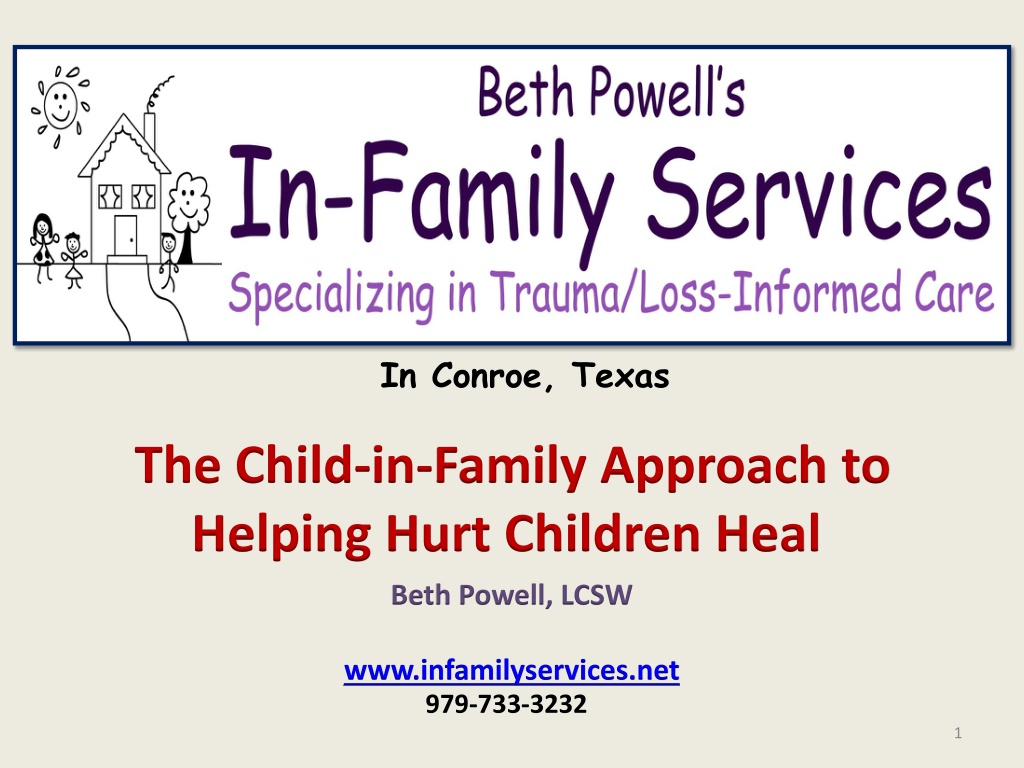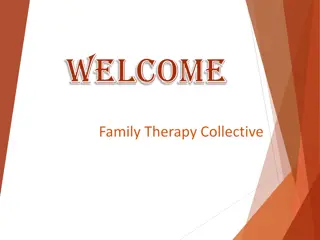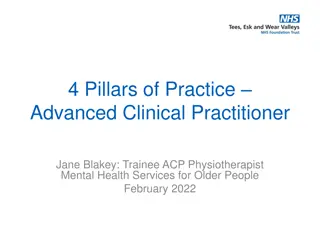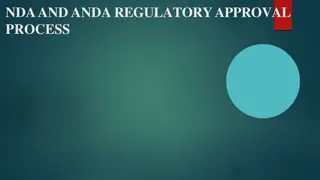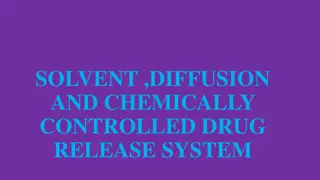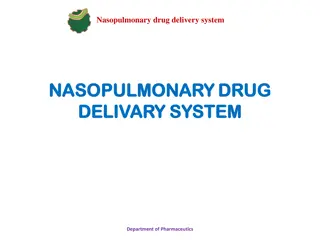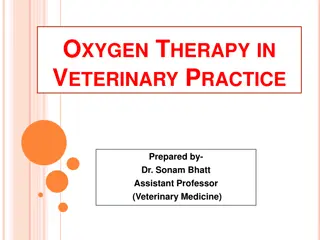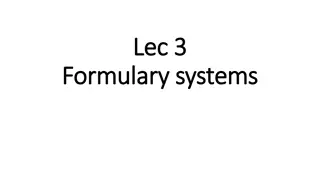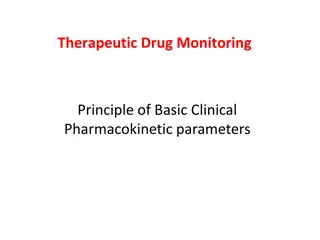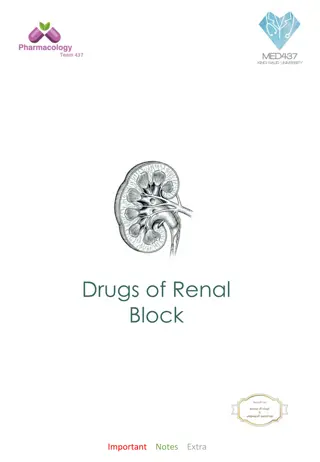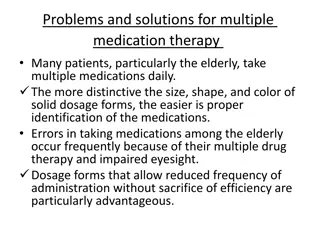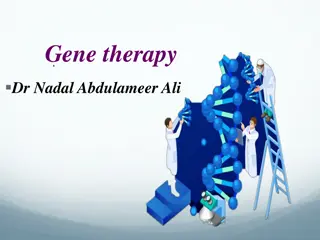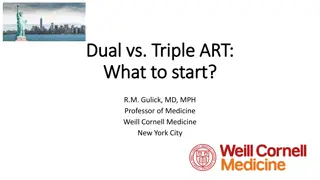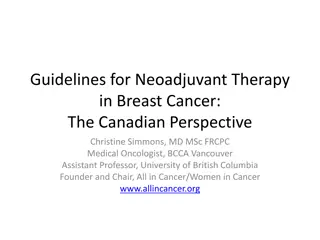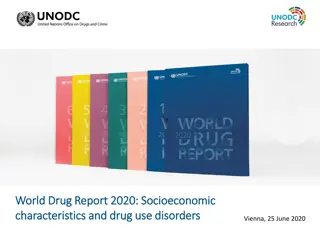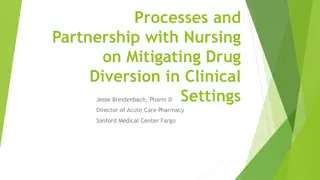Drug Therapy Problems in Clinical Practice
In this pharmaceutical care report, various drug-related problems encountered in clinical scenarios are identified. These include issues such as dosage adjustments, drug-drug interactions, compliance challenges, and untreated conditions affecting patient outcomes. The cases highlight the importance of vigilant medication management to optimize therapeutic outcomes and ensure patient safety.
Download Presentation

Please find below an Image/Link to download the presentation.
The content on the website is provided AS IS for your information and personal use only. It may not be sold, licensed, or shared on other websites without obtaining consent from the author.If you encounter any issues during the download, it is possible that the publisher has removed the file from their server.
You are allowed to download the files provided on this website for personal or commercial use, subject to the condition that they are used lawfully. All files are the property of their respective owners.
The content on the website is provided AS IS for your information and personal use only. It may not be sold, licensed, or shared on other websites without obtaining consent from the author.
E N D
Presentation Transcript
In Conroe, Texas The Child-in-Family Approach to Helping Hurt Children Heal Beth Powell, LCSW www.infamilyservices.net 979-733-3232 1
The Child-in-Family Approach to Treating Children from Hard Places 1. Source-based, not symptoms based 2. Systems-based; child or teen is not seen alone; even young adults must come with primary caregiver, support person or mentor 3. Strong teaching component for client, caregiver, support person or mentor 4. Recommendations for treatment are comprehensive and sequentially arranged. 4. Caregivers are trained as co-therapists so interventions continue at home 5. Evaluation is on-going; interventions are continually updated 6. Cost and time effective 7. Strengthens bonds and relationships between caregivers and child 8. Ideal caregivers are: a. Hands-on parents who want to know what to do at home to help their children be all they can be and who possess the time, the will and the determination to be able to do so. Beth Powell, LCSW, 2017 2
A Systems Approach to Intervention Beth Powell, LCSW, 2015 3
Most Children Who Are Living in Foster/Adoptive Homes Have Had Disruptions in Various Systems That Have Caused Them Emotional and/or Developmental Challenges. Just Because Kids Look Like They Are Doing Okay Doesn t Mean That They Are. Beth Powell, LCSW, 2015 4
It Takes More Than Love and a Good Home to Help Kids from Hard Places. Notice What Has the Most Influence. Beth Powell, LCSW, 2015 5
Too Many Children Are Challenged Mentally, Neurologically, Physically, Spiritually, Socially and Academically Because of That Previous Hard Place. Beth Powell, LCSW, 2015 6
What Can Cause the Symptoms We See? Anxiety Developmental Age Nutrition Insufficient Oxygen Boredom ADHD Vestibular Wrong Meds Perception Differentiation Fetal Alcohol and Drugs Beth Powell, LCSW, 2015 7
If We Are Going to Address the Problem, We Have to Identify the Sources of the Symptoms or Behaviors We See. Sources don t have titles like: ADHD Reactive Attachment Disorder Intermittent Explosive Disorder Oppositional Defiance Disorder Conduct Disorder Beth Powell, LCSW, 2016 8
Most of the Behavioral Symptoms We See in Our Population Are Fear-Based and/or Neuro-Behaviorally-Based. Sources Such as the Following Need to Be Addressed: Sticky Interhemispheric Switching Family Dynamics Immature Differentiation Sensory Processing Issues High Carb/Sugary Diets Beth Powell, LCSW, 2016 9
Trauma Can Begin In-Utero What pregnant mom experiences impacts baby. What pregnant mom thinks impacts baby. What pregnant mom feels impacts baby. Reference: The Secret Life of the Unborn Child. Thomas Verny, M.D. and John Kelly. Dell Publishing (1981) Beth Powell, LCSW, 2015 10
Trauma Can Be Post-Utero Experiencing: Neglect Abuse Loss Disasters Witnessing: Violence (even on TV and computer screens) Note: Pre-birth serious stress/trauma creates more complex brain problems which results in more extreme behavior/academic problems. Beth Powell, LCSW, 2015 11
How Trauma Impacts the Growing Brain Experience can change the mature brain But experience during the critical periods of early childhood organizes brain systems! The brain develops in a use-dependent manner from bottom of the brain to top of the brain. It is easier to change the mind than it is to change the brain. --From Dr. Bruce Perry, Trauma and Brain Development Beth Powell, LCSW, 2015 12
An Integrated, Systems-Based Trauma- Informed Care Approach Traumatized children need to be better identified and receive a comprehensive evaluation and treatment plan that is updated every 4-6 weeks: Neuro-behavioral, sensory, behavioral, psychological, nutritional, spiritual, social, physical, educational, etc. The order of the child s therapeutic interventions are determined by the systems that must change first so that the child demonstrates visible progress in the areas targeted. Caregivers must be an integral part of the treatment session. Foster/adoptive parents are the primary treatment providers; they need to be trained, supported and mentored. Beth Powell, LCSW, 2015 13
Which Systems Need to Change First? For Example: . Beth Powell, LCSW, 2015 14
Professional Evaluation Should Determine, in Order of Importance, The Systems That Care Givers Need to Change First, So That Improvement Can Be Seen in the Child. Beth Powell, LCSW, 2015 15
If a Child Presents with Bad Behavior, Are We Identifying the Systems That Are Causing the Behaviors We See? Beth Powell, LCSW, 2015 16
Brain Issues? Attitude Brain Or Attitude (Mind) Issues? Beth Powell, LCSW, 2015 17
It Takes Longer to Change a Brain Than It Does a Mind. Mr. Attitude Beth Powell, LCSW, 2015 18
When Is It a Cant And When Is It a Won t ? Beth Powell, LCSW, 2015 19
Cant = Brain/Sensory Challenge Won t = Attitude Challenge Beth Powell, LCSW, 2014 20
Safety-Security Comes First with Traumatized Kids and Is Emphasized Again, and Again! Beth Powell, LCSW, 2015 22
Caregivers Have to Prove Over and Over Again That They Can Keep These Kids Safe Whether the Behavior Is A Can t or a Won t. Beth Powell, LCSW, 2015 23
Caregivers Must Also Be Trained to Recognize Brain States and Brain State Changes. They Must Also Learn How to Interpret What the Child s Behavior Is Really Saying. And Then Intervene Appropriately at the Right Phase of Arousal or Dissociation. Not When It s Too Late, and the Brain Is Continuing to Practice What the Body Already Knows How to Do. Beth Powell, LCSW, 2017 24
That is why each child needs to have on-going evaluation and updates to treatment plan. And caregivers must have on-going child-in-family training and mentoring to meet the neurobehavioral, behavioral, psychological and spiritual needs of the child. Beth Powell, LCSW, 2017 25
Good compensatory interventions are important, but specifically designed neuro-sequential brain-changing activities that are frequently practiced are even better! Beth Powell, LCSW, 2017 26
The brain develops in a use-dependent manner. What is practiced becomes perfect. What problems occur if the above is practiced too much? Beth Powell, LCSW, 2017 27
The Fight Side of Fight-Flight-Freeze Arousal Spectrum Brain States: Rising Anxiety Anxious Vigilance Fearful Resistance Angry Opposition Defensive Aggression Angry Meltdown The Flight-Freeze Side of Fight-Flight-Freeze Dissociative Spectrum Brain States: Rising Anxiety Compliant Fearfulness Frightened Avoidance Freaking Out or Dissociation Loss of Consciousness (Information on this page inspired from Dr. Bruce Perry s The Boy Who Was Raised As a Dog, P. 249.) Beth Powell, LCSW, 2017 28
Sometimes, the Behaviors of Traumatized Kids Challenge Our Own Sense of Safety-Security. Do You Get Triggered by the Little Angels in Your Care? Beth Powell, LCSW, 2016 30
Build Your Resilience! Strive to: -- Identify the Sources of the Annoying Behaviors --Remove the Judgment Regarding the Behaviors --Remove Your Defeating Thoughts, Beliefs and Feelings Triggered by the Behaviors Beth Powell, LCSW, 2016 31
Read a Traumatized Childs State Changes Red ears? Change in breath? Rocking? Deer-in-the-headlight look? Pupil change? Scanning the horizon for danger? Nervous when people are too close or behind them? Prickly? Got hyper or ultra spacy? Going (or went) ODD/OCD? Pulse significantly increased, decreased or is erratic? Beth Powell, LCSW, 2015 32
The Care-Giving Adult Must Build Trust and Emphasize Protection with the Traumatized Child Watch Your Affect! Voice Volume Facial Expressions Body Movements Should Not Indicate Threat. Firm, but Empathic Style of Interaction with Child Don t Touch Hyper-Vigilant Kids Unless You Are Ready for Resistance! Reward Them for Using their Words to Ask For What They Need. Give Them Two Choices for Behavior: Both You Can Live With Thank Them Ahead of Time for Doing What You Ask. Avoid Yes/No Questions with Compliance Issues. Safety-Security (The Feeling of Protection Develops before the Feeling of Love.) Caregiver Is the Benevolent Authority Figure: Firm, But Loving. Caregiver s Posture Is Important as Well as Height above Child: Must Exude Strength/Protection. Activity and Noise at Calm Level Traumatized Children Need to be Situated Where They Can See Others Moving. Organized, Clutter Free Environment Important! Keep to Schedules: These Kids Don t Transition Well. Watch for Kids State Changes and Be Proactive. Start off Strict and Loosen Up as Positive Trust Develops. Beth Powell, LCSW, 2015 33
Bibliography Awakening the Child Heart. Carla Hannaford, Ph.D. Jamilla Nur Publishing. 2002 Behavior Solutions for the Inclusive Classroom. Beth Aune, OTR/L, Beth Burt and Peter Gennaro. Future Horizons. 2010. Easy to Love, Difficult to Discipline. Becky Bailey, Ph.D. HarperCollins. 2000. More Behavior Solutions in and Beyond the Inclusive Classroom. Beth Aune, OTR/L, Beth Burt, and Peter Gennaro. Future Horizons. 2011. On Killing: The Psychological Cost of Learning to Kill in War and Society. Lt. Col. Dave Grossman. Little, Brown and Company. 1996. The Body Keeps the Score. Bessel Van Der Kolk, M.D. Penquin Group. 2014 The Boy Who Was Raised as a Dog. Bruce Perry, M.D., Ph.D. and Maia Szalavitz. Basic Books. 2008. The Connected Child. Karyn Purvis, Ph.D., and David Cross, Ph.D., and Wendy Lyons Sunshine. McGraw Hill. 2007 The Fabric of Autism. Judith Bluestone. The Handle Institute. 2004 The Secret Life of the Unborn Child. Thomas Verny, M.D., with John Kelly. Dell Publishing. 1981. Beth Powell, LCSW, 2015 34
